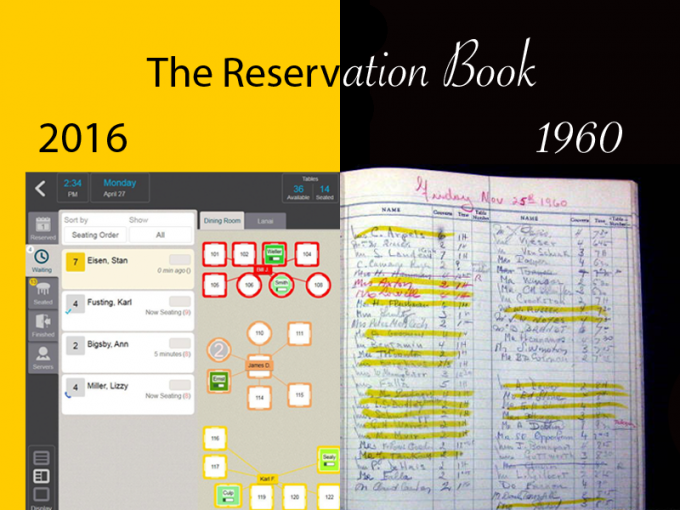<

Like many aspects of modern day life, the traditional reservation book has been replaced by advancing technology. Reservation software, also known as table management software, has forever changed the booking process, for both restaurant operators and consumers. Not only has the booking process evolved but the introduction of this software has given operators further ways to streamline restaurant operations.
Once again advances in technology have caused us to abandon pen and paper, just as typing emails replaced writing letters by hand. In the case of the reservation book it is a welcome progression, gone are the days where the host struggled to read chicken scratch handwriting to determine whether Jane Brown or James Brooke would be eating at table five.
Not too long ago there were limited ways reservations could be made, you either phoned during venue opening hours (if they were closed you hoped and prayed that they had an answering machine) or, if it was convenient, you visited the venue in person. The introduction of the electronic reservation system has made way for a new more convenient way to reserve a table. All good systems will incorporate a widget function allowing customers to book online whether it be on a desktop or on mobile, with these bookings being automatically added to the reservation book. To see an example of a working widget visit the Baresca website.
For reservations which are still made over the phone there is no longer a frantic search for the sole copy of the reservation book. Because electronic systems are software based they can be used on portable devices like tablets and phones so the reservation book is no longer constrained to one location. This also means that during operation hours’ mangers will have access to the reservation book, via an app or phone, without physically being at the host stand. Superior software, such as DineTime, will sync devices simultaneously ensuring everyone who is viewing the platform will always have the most up to date information.
Unlike the traditional book form, reservation software has the capability to do much more than simply keep track of who is attending your restaurant and what time they are arriving. Reservation software offers an entire platform to create and organise floor plans. Say goodbye to A3 sheets of paper and trying to manually draw your restaurants floor plan. For software like DineTime, there is a built in room editor to create custom and accurate floor plans to streamline restaurant operations, with these floor plans being automatically divided according to the amount of servers working per shift. The intuitive nature of the software will seat new diners or reservations in a section with the least guests to equally distribute workload between servers.
Even if your restaurant opts for a no reservation policy you will still be able to benefit from table management systems and the modern day reservation book. If you don’t accept reservations, chances are there will regularly be a line of diners outside the front door waiting for a table. These lines may showcase the popularity of your restaurant to on-lookers but it does nothing to encourage repeat customers. Advanced reservation software gives you the ability to add customers to a waitlist and accurately quote a wait time depending on party size. For example, table management software DineTime has the ability to quote a guest their wait time by using 2-way text messing can notify the party when their table is ready. To take full advantage of waitlist functionality DineTime also incorporates a consumer app which allows guests to see current waitlist times for restaurants close to their location as well as put themselves on a restaurant’s waitlist from their phone.
Before technology, the traditional reservation book did not have the capability to manage waitlists and it certainly didn’t have the ability to capture important analytical information. An electronic solution means operators can access real-time and historical data on reservations, waitlists, table turns and seating statistics, with many solutions allowing you to run and print detailed reports for any given day, week or month. These historical analytics are an important tool for operators to improve service and understand their business. In other words, it provides operators with a complete digital footprint of their customer’s journey. For customers who have used the waitlist function their mobile numbers will also be stored in the software and can be utilised for future marketing campaigns.
The last, in a long list of advantages software has over the paper reservation book, is automated functionality, for example the DineTime solution has the option to set “check backs” once a table has been seated. This means that at certain time intervals servers will receive an alert on their personal pager to check on a particular table. During these check backs servers have the opportunity to sell further food or drink products while ensuring a high level of customer service is being upheld.
